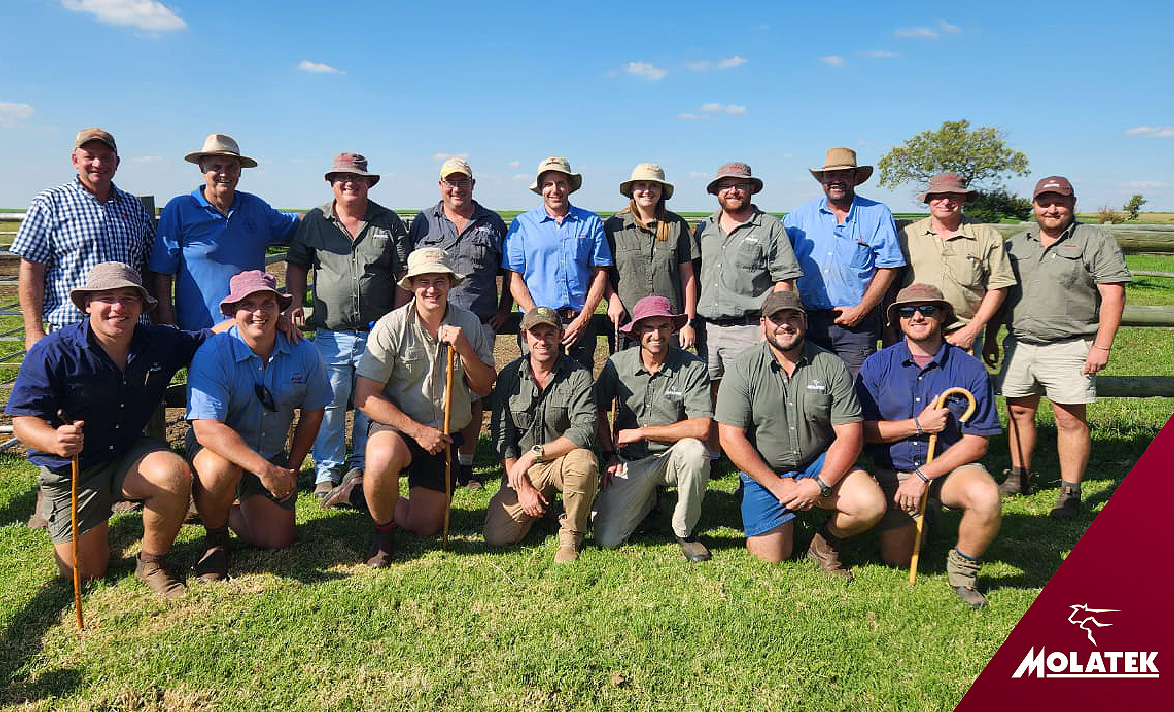FEEDING BULLS DURING DRY WINTER MONTHS IS AS IMPORTANT TO PREPARE THEM FOR AN AUCTION
Dr Vlok Ferreira, Technical Executive Molatek
Cattle farmers, and especially stud farmers, will want to ensure that their bull herd maintains condition and health throughout the winter months to ensure optimal body condition and fertility once the mating season starts again in spring and summer.
Feed requirements for bulls will vary depending on their physiological stages, as a weaner will require a different level of nutrition from a mature bull, and their winter feed requirements will be very much dependent on this stage.
Younger bulls will need a sufficient level of protein and energy, as they are still growing. You will need to take into account the amount of feed they require to maintain a good growth rate, as well as to maintain body condition and body heat throughout the colder months.
Older, more mature bulls will need to be monitored to ensure that they do not lose body condition leading up to the mating season in spring and summer. They should have enough of a fat covering, but not so fat that they develop fertility issues as a result of being obese.
Elements to take into account:
- Energy from fat and carbohydrate sources. This would be in the form of oilcakes (protein and fat) and grains like maize (carbohydrates). It is important to ensure that the level of energy in the diet is increased.
- Protein sources and supplements such as soybean- or canola oilcake. Protein levels in winter should be at a sufficient enough level that rumen microbes are not affected negatively.
- Minerals such as copper, manganese and zinc which are essential trace minerals that greatly influence fertility.
- Vitamins such as Vitamin A may be deficient in winter grazing, and may lead to health and reproductive problems if they are not sufficiently supplemented for. Should a bull not receive enough Vitamin A in its diet, its ability for spermatogenesis is impaired, which leads to a reduced fertility.
- Water should be available to the bulls at all times, it should be clean, not contaminated, and at a temperature that is suitable for drinking. If a bull does not drink sufficient amounts of water, it will suppress the amount of feed that it ingests.
- Dry matter intake – 2.7% of body weight at 230 kg and 2.5% at mature age.
- Protein – 13.5% to 15% on a DM basis.
- Energy maximum – 10.2 MJ Metabolic energy (68% Total digestible nutrients) on DM basis.
- Calcium to phosphorous ratio: 1:1.5 to 1:2; Calcium – 0.8% and Phosphate – 0.4%
Body condition:
During winter, a farmer should aim to maintain or improve the body condition of his bull herd, and utilising the body condition score (BCS) method may be one of the most useful ways to determine this. On a scale of 1 to 5, with 1 being very thin and 5 being overfat, you would aim for you bulls to obtain a BCS of 3 – 3.5. Allowing bulls to become overfat leads to a reduced semen quality and semen production, as well as fewer cows mated due to a lack of libido and therefore reduced conception rates.
The farmer may need to separate younger and older bulls during winter, as their nutritional requirements will differ, and they may need to be kept on separate feeding regimes or diets. He may also want to separate bulls with different body conditions, such as separating thin bulls from fat ones so that you can identify an improvement or lack thereof in their condition.
By using high quality natural protein in Molatek Beef Fat 33+, the bypass protein percentage, as well as the amino acid composition is optimized according to the amino acid profile required for muscle growth.
COMPLETE AND CAFETERIA BEEF FAT 33 + DIETS FOR BULLS
| Mixing Instruction | COMPLETE DIET | CAFETERIA DIET | |
| Molatek Beef Fat 33 + (V17357) | Kg | 160 | 160 |
| Maize / Hominy Chop | Kg | 600 | 700 |
| Molatek BYPASS (V21556) | Kg | 50 | 50 |
| Roughage | Kg | 200 | Ad lib |
| Total | Kg | 1010 | 910 |
Feeding instructions:
- Maize can be partly substituted with small grains (50% with barley or triticale, and 20% with wheat), 50% with grain sorghum or in total with hominy-chop.
Complete diet
- Day 1-5: Limit the complete diet to 1.8% of the body weight per animal per day plus long hay ad lib.
- Day 6-10: Complete diet plus long hay ad lib if animals are totally adapted and show no sign of acidosis. The complete diet, without the extra-long hay, is fed ad lib after day 10.
Should you have any questions or concerns regarding how to properly feed your bull herd during the winter months or preparing them for an auction, contact your Molatek Technical Advisor.


